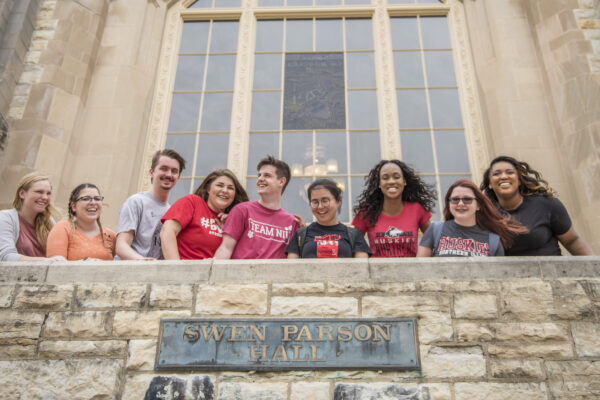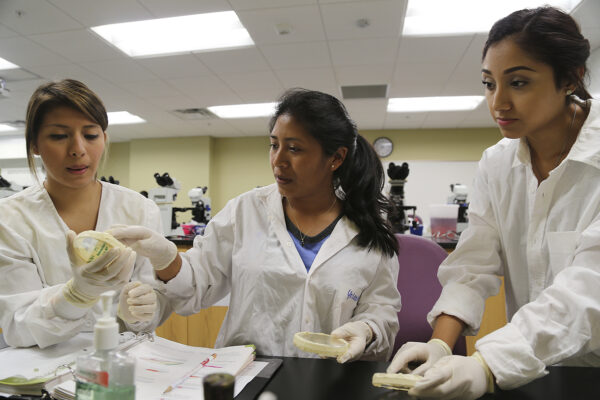By Donald J. Laackman
According to a survey commissioned by Champlain College Online, many adults aged 23 to 55 without a bachelor’s degree are dissatisfied with their careers. They are not making enough money. Their work doesn’t interest them. They have limited opportunities for advancement, or they simply want to find a better job. Many of these individuals have considered going back to college to enhance their prospects, but they don’t perceive higher education to be a realistic option. As college and university leaders, we need to reckon with this hope gap.
To put the hope gap into clearer perspective, let’s take a closer look at the numbers.
In our survey of more than 1,000 adults, we found that 60 percent have considered going back to college to complete a degree or certificate program, primarily to increase their earning potential, to feel better about themselves, or to fulfill their dream of earning a degree. Yet they feel they can’t return to college because they don’t want to be burdened with student loan debt or they can’t afford it. Financial concerns aren’t their only barrier; many adults considering higher education are uncertain that they will be able to make the time, or are worried that they don’t have what it takes to succeed.
What these would-be adult learners do recognize is that higher education can improve their lives. They understand that having a degree generally leads to better jobs and higher salaries: 84 percent of those who have considered going back to college believe it is important to hold a bachelor’s degree in order to secure employment, and 75 percent rate higher education as successful in preparing adults with the necessary knowledge and skills to succeed. Survey respondents drove home this point, explaining their desire to go back to college with statements like, “I feel like I’m stuck in a dead-end job. An education would improve my skills and help me find a better career,” and “I’m considering going back to college to get higher pay. It’s tough to support a family with a minimum wage job.”
Notably, these economic benefits are not the only motivator for adults seeking to return to school. Many recognize higher education as having the power to change their lives by enhancing their sense of self-worth and creating more opportunities for their families. “As a single mom, I wanted the opportunity to make a better life for my kids,” said another survey respondent, speaking for many who aspire to lift their families through educational attainment.
What would it mean for individuals, families, communities, and our country if more of the adults stuck in the hope gap had access to a transformative education? From quality of life to financial security to health and well-being, research overwhelmingly points to a wide variety of highly positive individual and social outcomes as a result of degree completion. Every post-traditional learner who wants a college education deserves the opportunity to attain these things.
It’s important that we in higher education address not just the external barriers potential adult learners face, but also the less obvious obstacles that exist within our institutions.

The idea of enrolling in a four-year, 120-credit degree program—and making it to graduation—seems daunting to many adult students who can’t imagine taking on such a significant commitment in the midst of their other responsibilities, both personal and professional. Our responsibility as higher education leaders doesn’t just come down to opening doors for adult learners: We need to help them see that success is possible and give them continued support along their educational journeys. We need to find ways to make higher education a realistic option for adults who understand its value but can’t see the path to change their circumstances.
How can the higher education community do its part in helping overcome the hope gap to cultivate a new generation of post-traditional learners? Questions worth considering include:
- How can the diverse range of institutions across the United States work together to address the very real structural barriers to adult student enrollment and degree completion?
- How do we help adults weigh financial and time investments against the long-term value and transformative benefits of a postsecondary degree?
- How do we recognize and honor adults’ unique life experiences and diverse backgrounds?
- How are we evaluating credentials and knowledge outside of established college courses?
- What employer partnerships could serve as potential pathways for adult students, helping to offset the costs of higher education?
As an institution that provides both a traditional, on-campus postsecondary education to newly graduated high college students and an online-based education to post-traditional learners, Champlain College is weighing these issues and charting a path forward to enable more adults to achieve career and life fulfillment. While we have seen growth in our online undergraduate student population, this growth has been fueled by employee partnerships, and we see more and more adults being left behind without access to a high-quality education in high-demand fields.
In October of 2017, Vermont Governor Phil Scott announced the launch of the 70x2025vt initiative, which sets a goal of having 70 percent of the Vermont population attain a post-secondary credential by the year 2025. In Vermont, only 45 percent of the adult population has a post-secondary credential, and over 60,000 have some college education but no degree. This initiative has spurred us to consider how we, as a member of the Vermont higher education community, can help the state reach this goal.
Similar initiatives are being launched nationwide, as the need to create a more highly-trained workforce becomes clearer. But the reality is that we can’t meet those ambitious goals without reaching, and improving access for, non-traditional adult learners. We must think inclusively about who the college student is—and could be—to help adult learners become flourishing professionals in an ever-evolving job market. This effort will lead to more fulfilling careers and, ultimately, to more fulfilling lives.
With the post-traditional student population still underserved by too many of our institutions and the majority of American adults showing interest in returning to school, the time is now for higher education to engage in dialogue about the hope gap and how to bridge it. We at Champlain College are kick-starting what we hope will become a national discussion about the hope gap and the imperative for our institutions to lead more students successfully across it. I invite you to join us in this important dialogue.
If you have any questions or comments about this blog post, please contact us.


